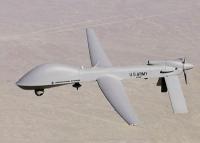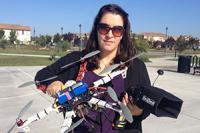-
U.K., U.S. responds differently to Snowden’s revelations about domestic surveillance
Legal analysts note that the United States and the United Kingdom have responded differently to the Snowden revelations. While in the United States steps have been taken to limit the NSA’s domestic surveillance powers, the United Kingdom is going in the other direction. The British government on Wednesday published draft legislation on surveillance and investigative powers – a legislation which is the government’s response to the documents leaked by Snowden. The U.K.’s draft bill not only embeds bulk data collection in law, but it enhances the surveillance and investigative powers of law enforcement and intelligence agencies.
-
-
U.K. surveillance bill debate: Judicial warrants vs. ministerial authorization for intercepts
Former Conservative shadow home secretary David Davis has said that the plans to grant police and intelligence agencies new powers to monitor suspects online will not get through parliament without a requirement for judges to sign off on spying warrants. A legal report written at the request of Home Secretary Theresa May recommended that judicial warrant rather than a ministerial authorization be required for intercepting individuals’ communications. Parliament’s Intelligence and Security Committee, however, recommended in March that ministerial authorization would be preferable. A draft of a new investigatory powers bill will be published Wednesday, and May said she would “be explaining the government’s position to parliament this week.”
-
-
Legislation would give U.K. police powers to access U.K. computer users’ browsing history
The U.K. police and intelligence service, ahead of the publication this coming Wednesday of legislation on regulating surveillance powers, have urged the government to give them the power to view the Internet browsing history of British computer users. Senior officers were pressuring the government to revive measures which would require telecommunications companies to retain for twelve months data which would reveal Web sites visited by customers. The police and intelligence agencies argue that such measures are necessary because the scale of online activity has made traditional methods of surveillance and investigation less useful.
-
-
IRS commissioner confirms agency employs cellphone tracking devices

IRS commissioner John Koskinen on Tuesday confirmed to lawmakers that his agency employed StingRay cellphone tracking devices. Koskinen said that the agency’s use of StingRay devices is limited to its criminal investigations division, which is responsible of investigating money laundering, terrorism, and organized crime cases. “It can only be used with a court order. It can only be used based on probable cause of criminal activity,” Koskinen said, the Hill reports. “It is not used in civil matters at all,” he continued. “It’s not used by other employees of the IRS.”
-
-
IRS employed cellphone-surveillance technology
The IRS spent $65,652 on surveillance technology which tracks people by capturing their cellphone calls through StingRays – devices which mimic legitimate cell towers. The devices are also known as IMSI-catchers or cell-tower simulators. In addition to locating cellphone users, StingRays also use the signals to identify the owner of the phone, and may also be able to capture the phone owner’s contacts, messages, and other content off the phone. More than a dozen federal agencies, and local police in twenty-two states, have also employed the technology.
-
-
Ruling shows Europe still vexed over NSA spying, leaving U.S. companies in legal limbo
For over fifteen years, the Data Transfer Pact between the European Union and the United States, more commonly known as Safe Harbor, had ensured that companies with EU operations could transfer online data about their employees and customers back to the United States despite stark differences between U.S. and European privacy law. Earlier this month, U.S. companies operating in Europe got some unwelcome news: Safe Harbor had been ruled invalid. The European court’s ruling has serious implications for these companies’ business models and profitability, leaving many scrambling to find solutions. But it also exposes a fundamental cultural rift between the U.S. and Europe’s conceptions of privacy – one that a new agreement won’t be able to paper over.
-
-
Mexico to use drones, satellites in a renewed effort to find dead students
Mexico said it would launch a new search, joined by international experts, for the remains of dozens of students training to be teachers who were abducted and apparently massacred in 2014. Forty-three students were abducted by corrupt municipal police, and then turned over to a local drug gang to be killed. Apparently, the gang leaders believed the students were linked to a rival drug gang in the area.
-
-
U.S. to unveil drone registry plan in response to safety, security concerns
As part of the U.S. aviation authorities’ effort to tackle the growing safety and security problems posed by drones, U.S. drone will soon be required to register their aircraft with the Department of Transportation. The register, to be made public on Monday, comes in response to a surge in incidents in which drones have flown near airports and crowded public venues.
-
-
Anti-drone defense system now features quad band RF inhibitor, optical disruptor
The world’s first fully integrated detect-track-disrupt Anti-UAV Defense System (AUDS) — launched by a trio of British companies in May this year — now features a quad band radio frequency (RF) inhibitor/jammer, an optical disruptor, and rapid deployment features in the final production version of the counter-drone system. The companies say that these enhancements follow extensive customer trials of the pre-production system across Europe and North America over the spring and summer.
-
-
Improving precision of drone navigation

Researchers are working to bring a new level of precision to the navigation systems used to guide drones. The work is supported through a contract with Southern Company, one of the U.S. largest energy companies, which plans to use unmanned aircraft to enhance safety for crews in the field and improve reliability for customers. The researchers have designed a prototype which uses onboard ultrasound sensors to relay information on the aircraft’s location to its operator.
-
-
White House will not seek law allowing law enforcement access to encrypted messages
The Obama administration has decided not to seek legislation which would require tech companies to design their devices in a way which would give law enforcement agencies access to individuals’ encrypted messages, the White House said on Saturday. The tech industry, led by giants Apple, Google, Facebook, IBM, and Microsoft, has mounted a vigorous campaign opposing any administration moves to weaken ever-more-sophisticated encryption systems which are designed to protect consumers’ privacy.
-
-
FAA expands efforts to tackle risk of drones near busy airports
A steep increase in reports of small unmanned aircraft in close proximity to runways is presenting a new challenge for the FAA. The Federal Aviation Administration (FAA) has entered into a Pathfinder agreement with CACI International Inc. to evaluate how the company’s technology can help detect Unmanned Aircraft Systems (UAS) in the vicinity of airports.
-
-
FAA proposes $1.9 million civil penalty for unmanned drone operations

The Federal Aviation Administration (FAA) the other day announced the largest civil penalty the FAA has proposed against a drone operator for endangering the safety of U.S. airspace. The FAA proposes a $1.9 million civil penalty against SkyPan International, Inc. of Chicago. The FAA says that SkyPan conducted sixty-five unauthorized operations in some of the U.S. most congested airspace and heavily populated cities, violating airspace regulations and various operating rules.
-
-
European Court of Justice: U.S. data systems expose users to state surveillance
The European Court of Justice (ECJ) in Luxembourg has ruled that U.S. digital data storage systems fail to provide sufficient privacy from state surveillance. The ECJ declared the American so-called safe harbor scheme “invalid.” The ruling, which is binding on all EU members states, stated that: “The United States … scheme thus enables interference, by United States public authorities, with the fundamental rights of persons…” The ruling will have far-reaching ramifications for the online industry and would likely lead many companies to relocate their operations.
-
-
The growing link between intelligence communities and academia
The events of September 11 2001 were a catalyst for change in the intelligence profession.One noticeable change: The number of universities offering an intelligence studies-related degree has grown from a handful to few dozen. Universities are starting to develop curricula that feature practical real-world exercises and structural analytical techniques. This is often happening in collaboration with the intelligence community. Like most businesses or agencies do, universities are starting to develop specific niches. This expansion is being led by the International Association for Intelligence Education (IAFIE), which was formed in June 2004. The field will only grow. It’s a necessary expansion to produce the professionals needed to ensure America’s national security and that of its allies for generations to come.
-
- All
- Regional
- Water
- Biometrics
- Borders/Immig
- Business
- Cybersecurity
- Detection
- Disasters
- Government
- Infrastructure
- International
- Public health
- Public Safety
- Communication interoperabillity
- Emergency services
- Emergency medical services
- Fire
- First response
- IEDs
- Law Enforcement
- Law Enforcement Technology
- Military technology
- Nonlethal weapons
- Nuclear weapons
- Personal protection equipment
- Police
- Notification /alert systems
- Situational awareness
- Weapons systems
- Sci-Tech
- Sector Reports
- Surveillance
- Transportation
Advertising & Marketing: advertise@newswirepubs.com
Editorial: editor@newswirepubs.com
General: info@newswirepubs.com
2010-2011 © News Wire Publications, LLC News Wire Publications, LLC
220 Old Country Road | Suite 200 | Mineola | New York | 11501
Permissions and Policies
Editorial: editor@newswirepubs.com
General: info@newswirepubs.com
2010-2011 © News Wire Publications, LLC News Wire Publications, LLC
220 Old Country Road | Suite 200 | Mineola | New York | 11501
Permissions and Policies
